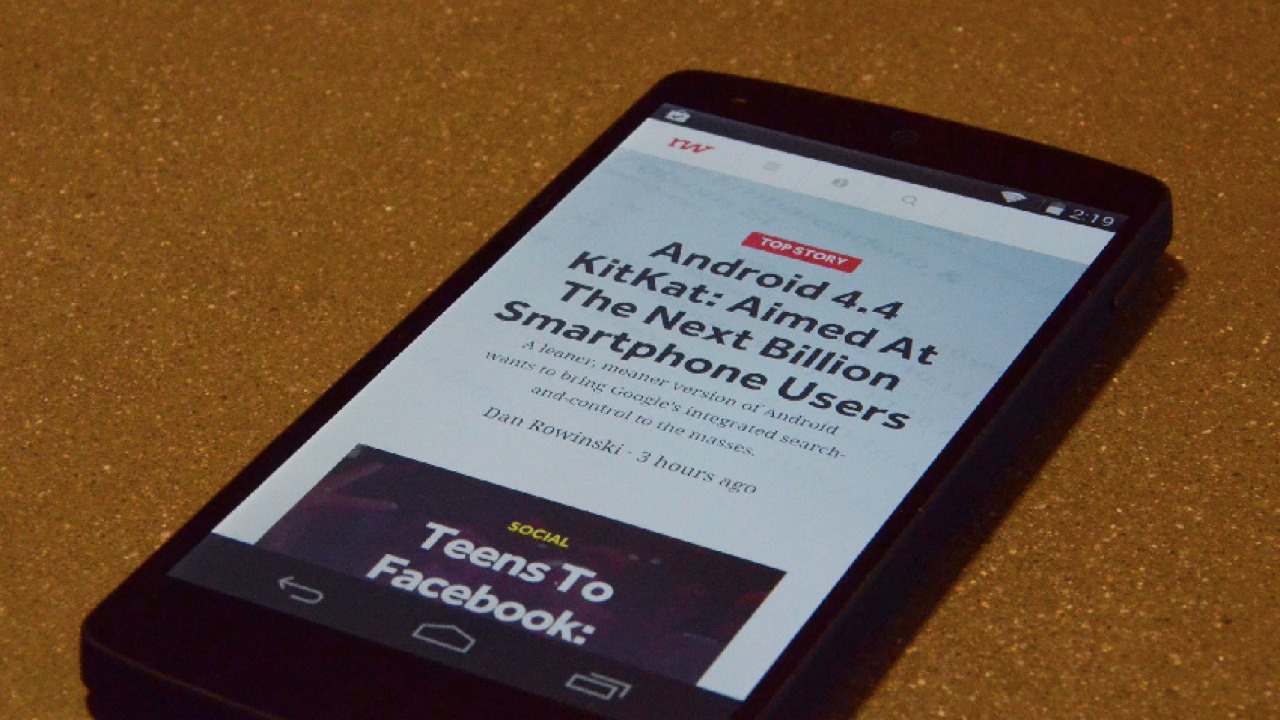
Google may be working on an application programming interface for fitness tracking in Android smartphones.
This new API could help Android smartphones automatically detect its users’ daily motion and exercise routines to provide contextual information for users, but it could also help third-party developers build integrated fitness apps that are much more native to than Android’s current ways of tracking fitness.
The API was discovered by the unofficial Google Operating System blog, which noted the API is not yet available to the public or developers but could be in the next version of Android, or, more likely, an update to Google Play Developer Services.
Something Old, Something New
Fitness tracking is nothing new to Google, so a fitness API for Android would not exactly be groundbreaking news.
The Nexus 5, the flagship smartphone for the Android 4.4 KitKat release, added platform support for two new types of composite sensors that can be backed into smartphones: A step detector, and a step counter. Nexus 5 owners can see their daily motion through their Google Dashboards, but when combined with location tracking and GPS capabilities, this information can be especially relevant to users, fitness hardware makers (like FitBit or Nike) and third-party developers that want to find new and exciting ways to access sensor hardware in Android smartphones.

Google is currently working with its chipset partners like Qualcomm and Samsung to bring the step counter and step detector sensors to new Android devices, many of which we will likely see in the first half of 2014.
Hence, as Google works to put these sensors in new smartphones, a new fitness API makes perfect sense to help explain this data to all parties involved. These types of APIs don’t really need to be updated in a brand new version of Android, but they can easily be integrated through Google Play Services, which automatically updates on a users device without their need to download it.
Evolution Of Fitness Tracking Through Sensor Data
You might say, “Google already does fitness tracking.” It certainly does location tracking to help deliver better search results and inform Google Now, the company’s intelligent personal assistant (again, see your Google Dashboard). Google also has an app called “My Tracks,” which is basically its own version of RunKeeper or MapMyFitness that uses GPS and other sensor data to track a run, hike or bike ride.
My Tracks is one of Google’s best but often overlooked apps. But it works based on an older model of smartphone fitness tracking that is based on older capabilities of these devices. My Tracks activates location data from GPS, cellular tower data and Wi-Fi to see exactly where you are going and how fast you are getting there and back. It then aggregates this data to local storage as an XML file which it then send to Google Drive, Google’s personal cloud storage product. This is all a very logical and linear of performing fitness tracking… but it is also starting to become outdated.

Sensor technology in smartphones is beginning to move past the GPS-based location tracking systems of yesteryear. That’s not to say that GPS will go away, but the contextual information offered to users and developers will be enhanced and augmented through a variety of new sensors and processors and ways to use them.
The step counter and detector in the Nexus 5 are just one way that new sensor technology is being employed for fitness tracking. Developers are also figuring out new ways to incorporate accelerometer (the sensor that detects how you are holding a smartphone and change from vertical to horizontal views), gyroscope (a sensor for measuring device orientation based on angular momentum) and compass data into apps. To learn the many ways in which developers are taking advantage of wearables to promote fitness, check out this piece from our editor-in-chief.
Sensors + APIs=Context & Opportunity
When you start incorporating all these sensors, the ability to track your workout stops being linear—GPS location to the cloud—and starts becoming more of like a fitness mesh network in your phone (and maybe soon, your smarwatch). Hence, a fitness API to coordinate, organize and export all of this data becomes much more necessary than it was previously.
See also: ReadWriteBody
Apple is actually ahead of Google in this regard. The iPhone 5s features the M7 “motion co-processor,” which is essentially an ARM-based Cortex-M3 that’s sole purpose is to aggregate and organize this type of sensor data in iOS 7.
In both cases of Android and iOS, the expanding capabilities of sensor data mixed with new software integration (like a fitness API) shows us how fundamentally more intelligent smartphones are becoming. People who say smartphone innovation is stalling or is in decline because many new phones don’t come with crazy whizbang new features just aren’t paying attention to reality.
Read more : How Google’s Fitness API Will Buff You Up

0 Responses
Stay in touch with the conversation, subscribe to the RSS feed for comments on this post.